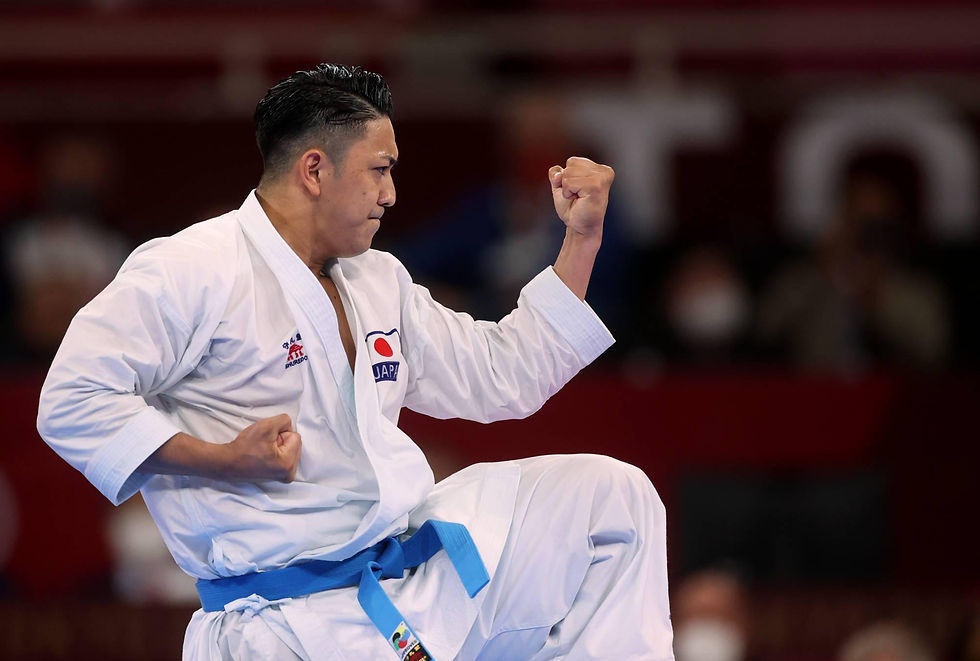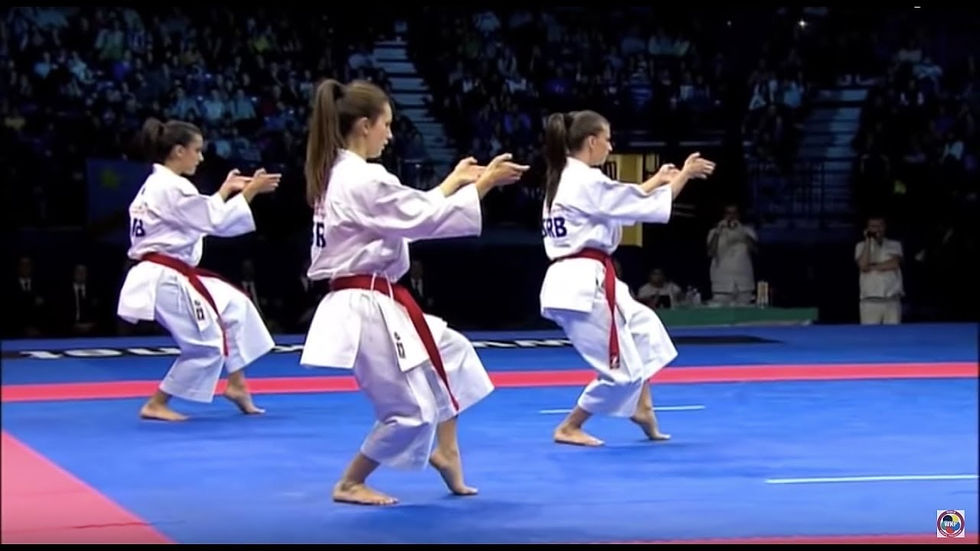5 Ways to Make Your Students Better at Kata
- Ernest Cadorin
- Sep 7, 2024
- 4 min read

An enthusiastic student might spend hours per week practicing kata, but if the training is unfocused, he or she may see only moderate gains. If the training is done with purpose, however, problems will be corrected, movements will be assimilated and the student will be motivated to take it to the next level.
A great kata performance must combine precision, flow, power and spirit, and good students spend considerable time and energy honing these qualities. Their training may be disciplined, but it also should be intelligent, and sometimes a little expert guidance is necessary to keep them moving in the right direction. To that end, here are five strategies you can use to encourage your students to optimize their practice and become better at kata.

SPOT-TRAIN DIFFICULT SECTIONS
Learning a kata is like learning to play a piece of music. Some parts are more challenging than others, and the most difficult parts require the most attention. Unfortunately, this requirement is sometimes overlooked, and it’s common for students who are working on a kata to simply perform it from beginning to end every time they do it.
Pro Tip: Kata practice becomes much more effective when you direct students to dedicate extra time to the sections that need it most. This could mean spot-training a single difficult move or repeating a whole sequence of moves dozens of times to burn it into muscle memory. With this type of focus, rough spots will be smoothed out and complicated segments will be performed with confidence. Before they begin, help them identify the sections they need to focus on.

DEVELOP DIRECTIONAL AWARENESS
Martial artists tend to have one or two favorite training areas. Whether it’s a corner of the dojo or a quiet room at home, these are the places where most of their kata practice takes place. Consequently, it’s not uncommon for students to use their surroundings as landmarks — either consciously or subconsciously — and associate each movement in a kata with the wall or piece of furniture they’re facing as they do it.
The problem, of course, is that those landmarks will not always be there when they perform the kata. When they demonstrate it in an unfamiliar environment, the lack of familiar surroundings can cause them to lose their bearings as they turn from one position to the next. In fact, even changing the starting direction of a kata is sometimes enough to cause disorientation.
Pro Tip: Teach students to use the forward direction only as reference during kata practice. Advise them to stay aware of which way is forward as they work through each movement of a kata. Remind them to visualize someone watching them from the front so they can use that imaginary person as a mental landmark. This will help them keep their bearings during any kata demonstration.

PAY ATTENTION TO DETAIL
There’s no point in students turning up the speed and power in a kata if precision is not there. When they rush through kata practice without completing movements or properly doing techniques, they’re missing out on the important physical and mental benefits the kata was intended to provide. In the long run, they will have to spend more time correcting the errors than they would have needed to get the movements right in the first place.
Pro Tip: Remind students that proper form should come before speed. Ensure that they’re practicing as slowly as necessary to develop the accuracy you expect. Encourage them to keep notes on the kata they’ve learned. This will help them internalize the movements and give them something to refer to in the future.
Advice for Students and Teachers: The old saying “Practice makes perfect” is not necessarily true. Practice ingrains habits, and it’s up to the martial artist to ensure that the correct habits are being ingrained. A better adage is “Perfect practice makes perfect.”

MIX IT UP
The human body is highly adaptive. Over time, it becomes accustomed to the demands of any training routine, and before long, the aspiring athlete’s progress starts to level off. This is one of the reasons top competitors regularly modify the exercises in their training programs.
Pro Tip: Martial artists experience training plateaus as much as anyone, and adding variety to kata practice is one of the best ways to surmount those plateaus. Introduce your students to variations such as practicing with their hands on their hips to bring more attention to the stances and working with their eyes closed to focus on balance. Training outdoors on uneven terrain is another good way to challenge them — as long as the necessary safety precautions are taken.

BE METHODICAL TO BECOME BETTER AT KATA
Most students have a few kata they consider their favorites. Often, these are the forms that get the most practice time while the others fall by the wayside. Before long, the neglected kata become rusty and possibly even forgotten.
Pro Tip: Encourage your students to cycle through their kata as part of their training regimen. Suggest tools they can use to help them manage their practice routines. Writing the names of kata on cards and methodically working through the deck is a simple way to ensure that no kata is left behind.
Various flashcard apps can eliminate the need for physical cards and allow practice routines to be accessed conveniently from mobile devices.
As an instructor, you must design your lessons so they convey the material that’s included in your art in an efficient manner. Develop your own cycles of kata to teach, along with ways to review them in class. With this kind of attention, your long-term lesson plan will ensure that your students learn all the forms they need to advance and, more important, that every one of those kata looks sharp.
